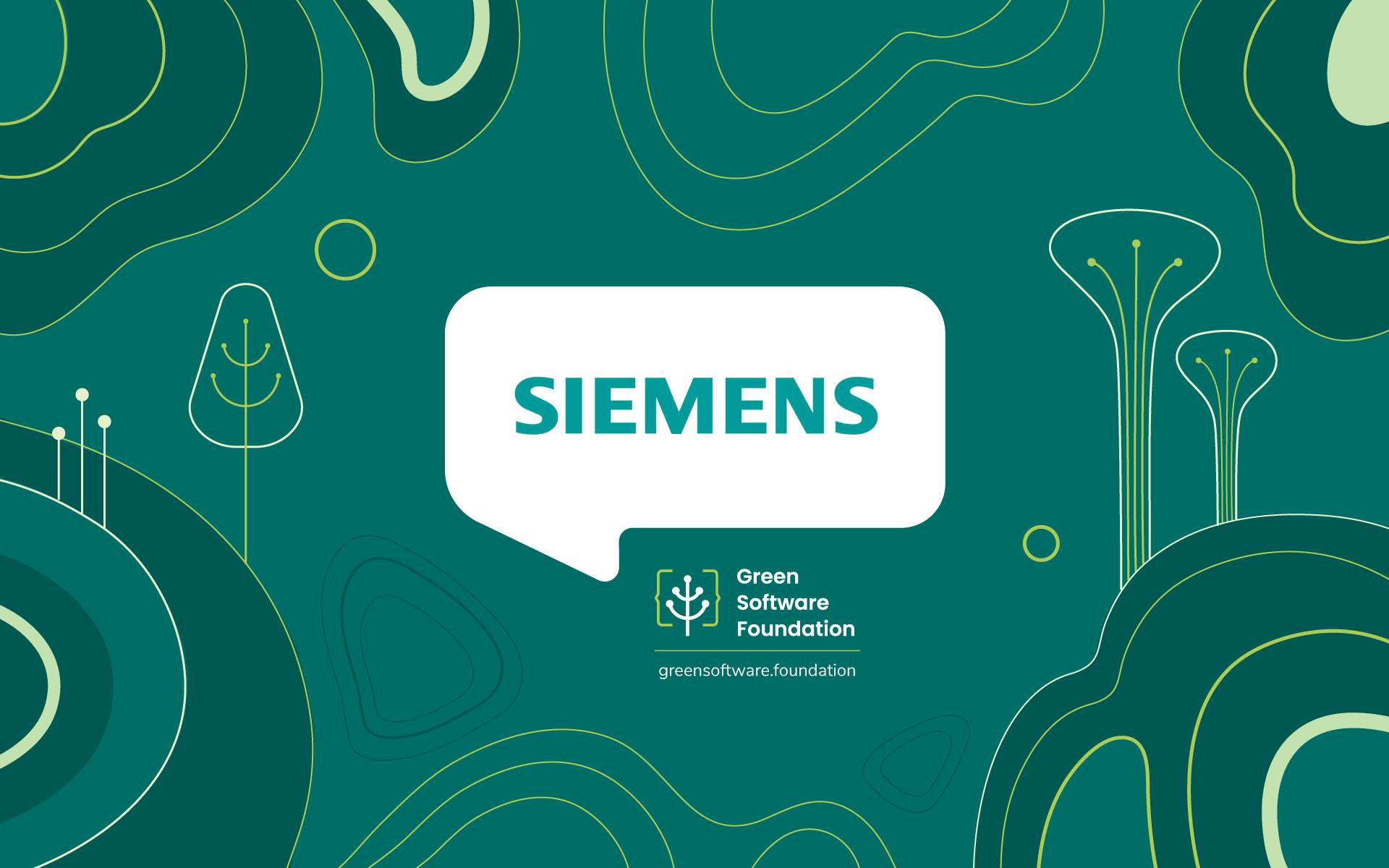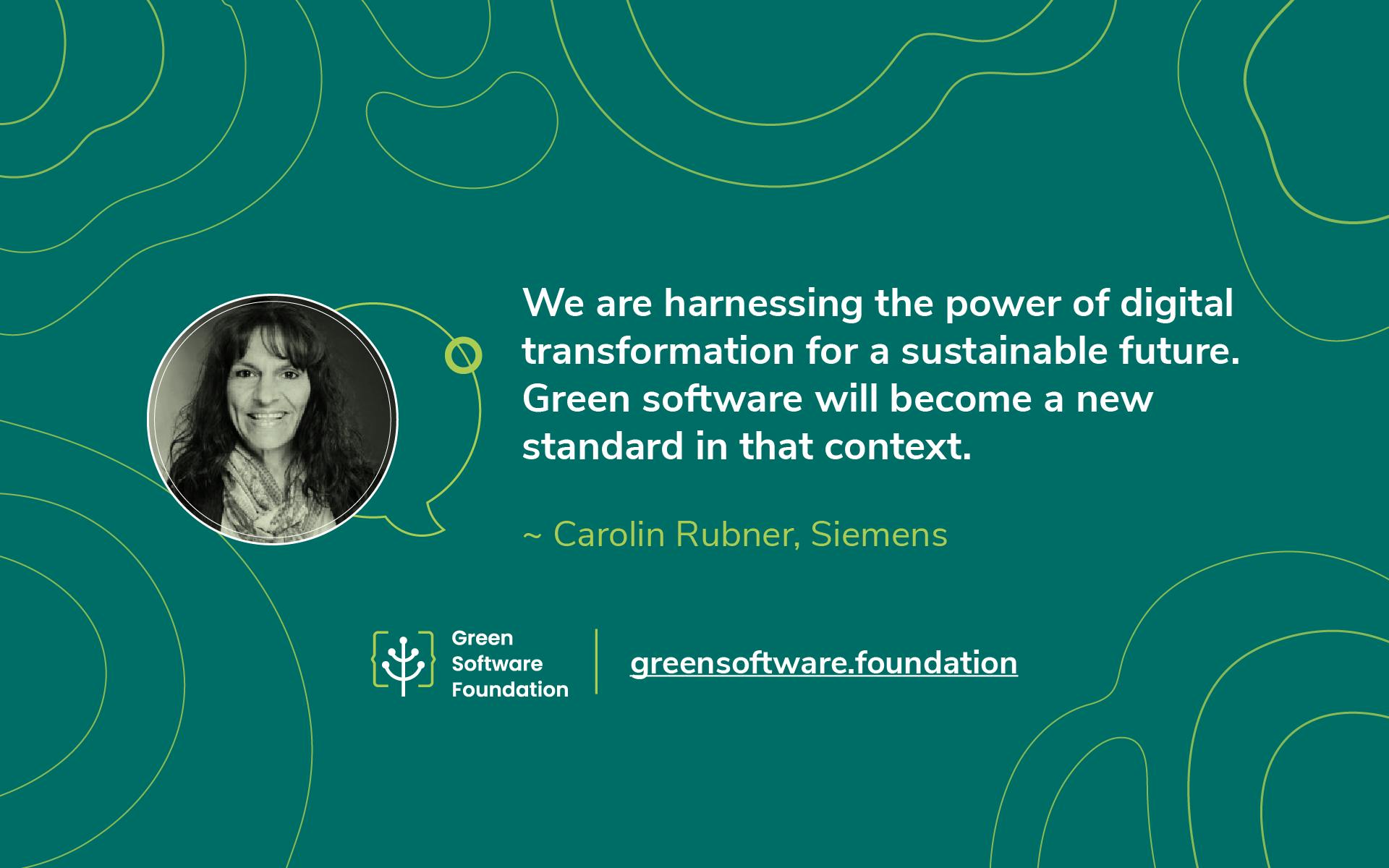As Head of Research Group, Carolin Rubner leads the Sustainable Software Engineering and industrial-grade DevOps practice, part of Siemens Company Core Technologies (CCT). Her focus is on the ‘how’ of digitalization and how new solutions and products are developed efficiently with the least resources and carbon emissions.
How does Siemens pursue sustainability?
We have set targets to achieve more with less through our DEGREE framework, based on six fields of action with clear priorities that drive our approach to sustainability. The “D” in DEGREE stands for decarbonization, and the “R” for resource efficiency.
As a large technology company, we understand our responsibility to shape the future. We drive sustainability by investing in our portfolio and applying our new technologies internally. Our products help our customers lower their emissions and reach their decarbonization goals; more info is available here: Product Carbon Footprint.
Which other sustainability initiatives are you working on?
Harnessing the power of digital transformation for a sustainable future is a fundamental part of the corporate fabric at Siemens. Our sophisticated software solutions help companies on their path to sustainability. With that said, our sustainability initiatives go far beyond software – 90% of our business enables sustainability impact for our customers.
We implement a range of sustainability efforts, including Business Conduct Guidelines, Smart Grids, Smart Buildings, Sustainable Mobility, Sustainable Supply Chain, Product Carbon Footprint transparency with SiGreen, etc. You can find more details on our global sustainability page. We have also made a firm commitment to becoming carbon neutral by 2030.
What does green software mean to you?
While the DEGREE framework presents a comprehensive view of Siemens’ ESG priorities, our green software practice warrants a granular approach. The sustainability and energy efficiency of software and its operations are essential for us. We have undergone a fundamental Software as a Service (SaaS) transformation, with software operations now focusing on code generation and operations efficiency.
As for myself, sustainability became an important topic early in my life. As an avid Girl Scout, I learned about nature and built a deep connection to the environment. I’m excited to contribute privately and with my work at Siemens. The focus of our DevOps practice on reducing carbon emissions is a direct reflection of that. Integrating Sustainable Software Development into our approach and driving this mission within Siemens generates a significant impact.
Do you apply any principles of green software engineering?
For quite some time, Siemens has included sustainability aspects in its products and solutions. The company has made accomplishments to provide greener solutions for our customers and reduce resource consumption and carbon footprint downstream, for example through the SiGreen application.
What I find fascinating about this work are the conversations and choices we must make to ensure the software itself is as green as possible. We have identified areas of improvement for software architecture, development environment, and operations runtime. We have already implemented a first round of improvement measures within our infrastructure and guidance framework. Now, we are working on models and measurements to create transparency and to be able to make data-based decisions for our products and solutions.
What’s the relevance of green software going forward?
Software and Software-as-a-Service (SaaS) are integral components of our products and offerings. The importance of green software moving forward is twofold for us. Firstly, there's software that actively contributes to sustainability through its functionalities, shaping our current and future product portfolio. Secondly, we're committed to another aspect of green software - reducing the environmental footprint of the software itself. We anticipate this second type to become a new industry standard.
Where are the main challenges, and how can we overcome them?
The challenges in assessing the sustainability of software lie in the complexity of influencing factors and the absence of standards for measuring 'greenness.' This makes it difficult to compare solutions and promote sustainability. To overcome these challenges, we are choosing to invest and advocate for more collaboration with stakeholder groups, partnerships with major IT providers to establish industry best practices, and engagement with organizations like the GSF to address interconnected sustainability issues.
Sustainability is part of our regular R&D activities, and we jointly between R&D, business stakeholders and partners aim to resolve mission-critical issues in the way of our sustainability goals. Within Software Systems & Processes, “Sustainable Software Engineering” is a core topic. Continuing this journey will be crucial for enabling technologies, methods, and tools that lead to sustainable outcomes.
What does it mean to join the GSF?
We are happy to join the GSF and collaborate and co-create with like-minded organizations. Green software needs a whole ecosystem of partners to address the issue. We are glad to engage and support with awareness, software architecture patterns and practices, standards activities, and community building.
All the working groups within the GSF are doing fantastic work. We promote these efforts within Siemens and encourage our software developers to engage and contribute. The Green Software Maturity Matrix, Patterns, State of Green Software, Impact Framework, and Standards are essential topics for us.
Together with the Green Software Foundation, we can further drive sustainability within the software industry and make improvements to our sustainability strategy and impacts, e.g., our decarbonization project in Amberg.

This article is licenced under Creative Commons (CC BY 4.0)
